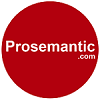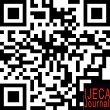Relevance of Character Education in Amanat Galunggung Manuscript with Unesco's Pillars of Education
Abstract
Keywords
Full Text:
DOWNLOAD [PDF]References
Adiguna, R. S., & Mustafa, H. R. (2023). Naskah Kuno Kabuyutan Ciburuy dalam Perspektif Historiografi Indonesia. Siginjai: Jurnal Sejarah. https://online-journal.unja.ac.id/siginjai/article/view/29342
Asabeh, S. A., Alzboon, R., Alkhalaileh, R., Alshurafat, H., & Al Amosh, H. (2023). Soft skills and knowledge required for a professional accountant: Evidence from Jordan. Cogent Education, 10(2). https://doi.org/10.1080/2331186X.2023.2254157
Atja dan Danasasmita, S. (1981). Amanat Galunggung. Proyek Pengembangan Permuseuman. https://balaibahasajabar.kemdikbud.go.id/amanat-dari-galunggung/
Beelen, J., & Dhert, S. (2014). UNESCO for Teacher Educators. The Proceedings of the 23th Annual Conference of the European Teacher Education Network. https://www.vliz.be/imisdocs/publications/ocrd/233657.pdf
Burger, K. (2010). How does early childhood care and education affect cognitive development? An international review of the effects of early interventions for children from different social backgrounds. Early Childhood Research Quarterly, 25(2), 140–165. https://doi.org/10.1016/j.ecresq.2009.11.001
Chowdhury, M. (2016). Emphasizing Morals, Values, Ethics, and Character Education in Science Education and Science Teaching. Malaysian Online Journal of Educational Sciences, 4(2), 1–16. URL : https://eric.ed.gov/?id=EJ1095995
Danasasmita, Saleh. dkk. (1987). Sewaka Darma, Sanghyang Siksa Kandang Karesian, Amanat Galunggung: Transkripsi dan Terjemahan. Proyek Penelitian dan Pengkajian Kebudayaan Sunda (Sundanologi). https://lib.ui.ac.id/detail.jsp?id=20265547
Darling, N., & Steinberg, L. (2017). Parenting Style as Context: An Integrative Model. Interpersonal Development, 161–170. https://doi.org/10.4324/9781351153683-8
Darsa, U. A., Sumarlina, E. S. N., & Permana, R. S. M. (2020). Existence of Sundanese Manuscripts As a Form of Intellectual Tradition in the Ciletuh Geopark Area. Jurnal Ilmiah Peuradeun, 8(2), 259–278. https://doi.org/10.26811/peuradeun.v8i2.369
El-Zastrouw, N. (2020). Menuju Sosiologi Nusantara: Analisa Sosiologis Ajaran Ki Ageng Suryomentaram dan Amanat Galunggung. ISLAM NUSANTARA: Journal for Study of Islamic History and Culture, 1(1), 89–144. https://doi.org/10.47776/islamnusantara.v1i1.46
Handayani, I. N. (2023). EMPAT PILAR PENDIDIKAN UNESCO DI PAUD TERPADU MUTIARA YOGYAKARTA. AlBanna: Jurnal Pendidikan Islam Anak Usia Dini, 3(1), 28–38. https://doi.org/10.24260/albanna.v3i1.1849
Hidayat, R. T., Haerudin, D., Muhtadin, T. A. N., Darpan, & Sastramidjaja, A. (2010). Peperenian Urang Sunda. Kiblat Buku Utama. https://opac.perpusnas.go.id/DetailOpac.aspx?id=413636
Hnamte, L., & Lalrinzuali, F. (2016). The Four Pillars of Education and the Models of Teaching. Mizoram Educational Journal, 01(2), 1–23. : URL: https://www.researchgate.net/publication/353572280
Keles, S. (2023). Navigating in the moral landscape: analysing bias and discrimination in AI through philosophical inquiry. AI and Ethics, (2023). https://doi.org/10.1007/s43681-023-00377-3Kioupi, V., & Voulvoulis, N. (2019). Education for Sustainable Development: A Systemic Framework for Connecting the SDGs to Educational Outcomes. Sustainability, 11(21), 6104. https://doi.org/10.3390/su11216104
Kling, A. M. (2023). Millennials’ Work–Life Balance Expectations. www.jku.atDVR0093696
Konch, M., & Panda, R. K. (2019). Aristotle on habit and moral character formation. International Journal of Ethics Education, 4, April 2019, 31–41.DOI: https://doi.org/10.1007/s40889-018-0061-7
Laksana, S. D. (2016). Integrasi Empat Pilar Pendidikan (UNESCO) Dan Tiga Pilar Pendidikan Islam. Al-Idarah : Jurnal Kependidikan Islam, 6(1)43-61. https://doi.org/10.24042/alidarah.v6i1.789
listiani, W., Rustiyanti, S., Sari, F. D., & Peradantha, I. B. G. S. (2021). Aplikasi Teknologi Augmented Reality Dalam Konservasi Situs Warisan Budaya Dan Mitigasi Bencana Gunung Galunggung Jawa Barat Indonesia. Jurnal Budaya Nusantara, 4(2), 242–247. https://doi.org/10.36456/b.nusantara.vol4.no2.a4054
Makrakis, V. (2012). Exploring university students’ competence on learning to live together sustainably: An international survey research. 16th UNESCO APEID International Conference “The Heart of Education-Learning to Live Together, 3(1) January 2012, 21–23. DOI: 10.2478/v10230-012-0005-y
Mauidah, J., Farida, K., & Sakinah, S. (2022). Permasalahan Perkembangan Nilai Agama dan Moral Generasi Alpha Untuk Anak Usia 5-6 Tahun. Raudhatul Athfal: Jurnal Pendidikan Islam Anak Usia Dini, 6(2), 139–152. https://doi.org/10.19109/ra.v6i2.14934
McCrindle, M., & Fell, A. (2022). Generation Alpha: Understanding our Children and Helping them Thrive. TEACH Journal of Christian Education, 16(1). https://doi.org/10.55254/1835-1492.1515
Mendes, E., Wohlin, C., Felizardo, K. R., & Kalinowski, M. (2020). Guidelines for the search strategy to update systematic literature reviews in software engineering. Information and Software Technology, 127, November 2020, 106366. https://doi.org/10.1016/j.infsof.2020.106366
Miles, M. B., Huberman, A. M., & Saldaña, J. (2014). Qualitative Data Analysis A Methods Sourcebook. In CEUR Workshop Proceedings (Vol. 1304, pp. 89–92). Arizona State University.
Noorduyn, J., & Teeuw, A. (2022). Tiga Pesona Naskah Kuno. Pustaka Jaya.
Nurwansah, I. (2019). L 632s Peti 16: Amanat Galunggung. https://www.kairaga.com/naskah-sunda/mss/amanat-galunggung/
Palmer, R. E. (2005). Hermeneutika: Teori Baru mengenai Interpretasi. Pustaka Pelajar. https://opac.syekhnurjati.ac.id/perpuspusat/index.php?p=show_detail&id=12500
Permadi, T. (2017). Naskah Nusantara dan Berbagai Aspek yang Menyertainya. Dalam Http://File. Upi. Edu/Direktori/FPBS/JUR. _PEND. _BHS. _DAN_SASTRA_I NDONESIA, 1–33. http://file.upi.edu/Direktori/FPBS/JUR._PEND._BHS._DAN_SASTRA_INDONESIA/197006242006041-TEDI_PERMADI/Studi_Naskah_dan_Beberapa_Aspek_yang_Menyertainya.pdf
Priscilla, C., & Yudhyarta, D. Y. (2021). Implementasi Pilar-Pilar Pendidikan UNESCO. Asatiza: Jurnal Pendidikan, 2(1), 64–76. https://doi.org/10.46963/asatiza.v2i1.258
Putra, A. S. D., Nalan, A. S., Rustiyanti, S., & Prawiyogi, A. G. (2023). Teks Kuno Amanat Galunggung Sebagai Sumber Inspirasi Penciptaan Seni Teater. 7(2).138-157. URL: https://journal.ubpkarawang.ac.id/index.php/BuanaIlmu/article/view/5374
Sari, M., & Asmendri, A. (2020). Penelitian Kepustakaan (Library Research) dalam Penelitian Pendidikan IPA. Natural Science, 6(1), 41–53. https://doi.org/10.15548/nsc.v6i1.1555
Suhifatullah, M. (2022). Learning to Find The Meaning of Life as Educational Pillar Innovation Beyond The UNESCO Concept. Educenter: Jurnal Ilmiah Pendidikan, 1(12), 1–7. DOI: https://doi.org/10.55904/educenter.v1i12.522
Suryalaga, R. H. (2010). Kesundaan Rawayan Jati. Yayasan Nur Hidayah. https://books.google.co.id/books/about/Rawayan_jati_kasundaan.html?id=u_7pZwEACAAJ&redir_esc=y
Sutisna, A. (2015). Aspek Tatakrama Masyarakat Sunda Dalam Babasan Dan Paribasa. Lokabasa, 6(1), 1–10. https://doi.org/10.17509/jlb.v6i1.3137
Tindale, C. W. (2011). Character and Knowledge: Learning from the Speech of Experts. Argumentation, 25(3), 341–353. https://doi.org/10.1007/s10503-011-9224-9
Tomlinson, H. 2004. Educational leadership: Personal growth for professional development. Educational Leadership: Personal Growth for Professional Development. Lodnon : SAGE Publications Ltd. DOI : https://doi.org/10.4135/9781446247150
Tyas, E. H., Sunarto, S., & Naibaho, L. (2020). Building superior human resources through character education. TEST Engineering & Management, 83, March - April 2020 11864–11873. : https://www.researchgate.net/publication/340984527
UNESCO. (2013). UNESCO Institute for Lifelong Learning Technical Note: Lifelong Learning. United Nations Education, Scientific and Cultural Organizaiton, 4, October 2015, 1-10. https://uil.unesco.org/fileadmin/keydocuments/LifelongLearning/en/UNESCOTechNotesLLL.pdf
Wartini, T. et al. (2010). Tutur Bwana dan Empat Mantra Sunda Kuno. Jakarta: Perpusna RI-Pusat Studi Sunda. https://opac.perpusnas.go.id/DetailOpac.aspx?id=349483
Wijayanti, Y. (2019). Nilai-Nilai Moral Dalam Naskah Amanat Galunggung Untuk Pendidikan Karakter. Jurnal Wahana Pendidikan, 5(4) 1-7. https://jurnal.unigal.ac.id/index.php/jwp/article/view/1552
Ziatdinov, R., & Cilliers, J. (2021). Generation Alpha: Understanding the Next Cohort of University Students. European Journal of Contemporary Education, 10(3), 783–789. https://doi.org/10.13187/ejced.2021.3.783
DOI: https://doi.org/10.31764/ijeca.v7i2.24151
Refbacks
- There are currently no refbacks.
Copyright (c) 2024 Ranu Sudarmansyah, Farid Rizqi Maulana, Nur Syazwani Binti Mohd Shukri, Andika Rizki Nugraha, Syva Lestiyani Dewi

This work is licensed under a Creative Commons Attribution-ShareAlike 4.0 International License.
IJECA (International Journal of Education and Curriculum Application) already indexed:










___________________________________________________________________
| |
____________________________________________________________________
IJECA Publisher Office:








.jpg)




